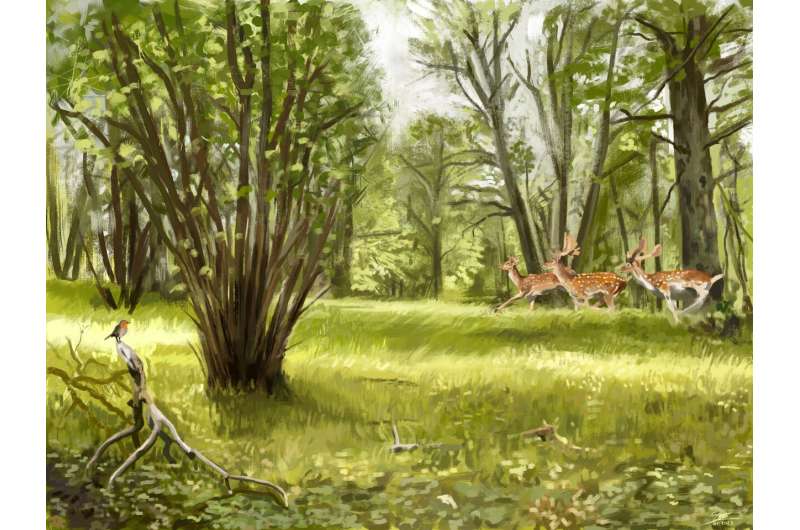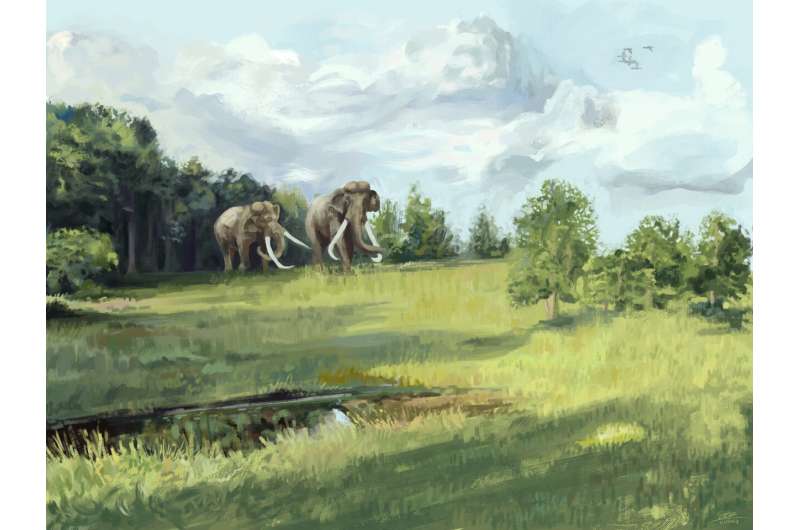November 13, 2023 report
This article has been reviewed according to Science X's editorial process and policies. Editors have highlighted the following attributes while ensuring the content's credibility:
fact-checked
peer-reviewed publication
trusted source
proofread
New study shows ancient Europe was not all forest, half was covered in grassland

A team of ecologists, biologists, geographers, geologists and Earth scientists from across Europe, working with a colleague from the U.K. and another from Canada, has found evidence suggesting that Europe was not covered heavily by forest during the Last Interglacial period, as many have suggested, but was instead half grassland. In their project, published in the journal Science Advances, the group studied pollen samples collected over many years at dig sites across Europe.
As the researchers note, there are many opinions regarding the European landscape during the Last Interglacial period 116,000 to 129,000 years ago—the period just before modern humans arrived on the scene. Many have suggested that virtually the entirety of the continent was covered by thick forests.
Such arguments have been bolstered by tree pollen samples found at multiple sites across Europe dating from the time under study. But such studies, the researchers claim, are skewed by the fact that trees produce far more pollen than other types of vegetation, such as grasses.
For this new study, the research team studied pollen samples collected over many years at dig sites by research teams all across Europe. As part of that analysis, they used the REVEAL reconstruction method, a computer model that has been developed over many years to account for environmental factors, such as pollen amounts from different species of plants, to make estimations of the number of plants in a given area at a given time.

The data showed different types of vegetation varied in density at different sites over time. It also showed large areas of grassland or savannah. When the team compared the differences in vegetation with climate records, they found nothing to explain why the entire continent was not covered in trees. They suspect that the reason for the existence of grassland was activity by megafauna such as rhinoceros and straight-tusked elephants, which would have trampled the ground, preventing trees from growing.
More information: Elena A. Pearce et al, Substantial light woodland and open vegetation characterized the temperate forest biome before Homo sapiens, Science Advances (2023). DOI: 10.1126/sciadv.adi9135
Journal information: Science Advances
© 2023 Science X Network




















